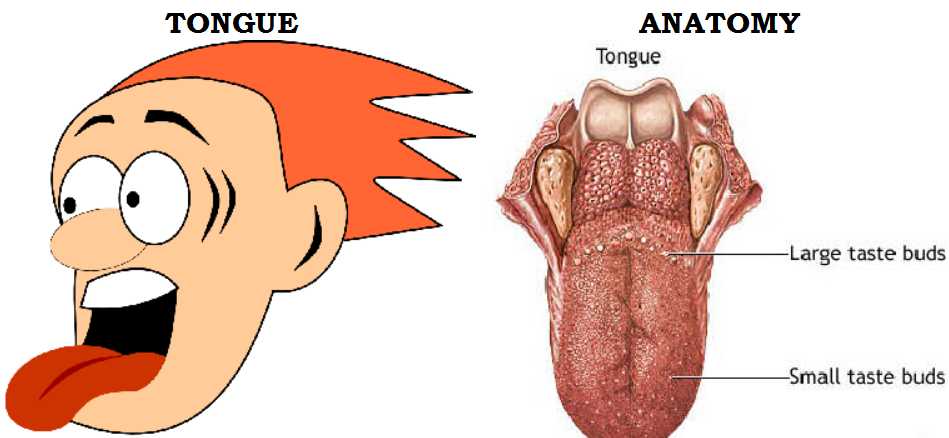201.HOW DO WE TASTE OUR FOOD?
Taste depends on the impact of the atoms given off by a substance on certain specially sensitive organs in our bodies. If the atoms of a substance can’t move about freely, we can’t taste it. That’s why we can only taste things that are in a state of solution.
Animals that live in water have taste buds all over their bodies. For instance, fish can taste with their tail fins! Animals that live on land have their taste buds concentrated in their mouths, and in man they exist only on the tongue.
If you examine your tongue in a mirror, you will see that it is covered with tiny, wartlike bumps, which are called papillae. The taste buds are situated in the walls of these papillae.
The number of taste buds found in animals depends on the needs of the particular species. For instance, a whale swallows whole schools of fish without chewing them; it has few taste buds, or none at all. A pig has 5,500 taste buds, a cow has 35,000, and an antelope, 50,000. Man is not by any means the most sensitive taster; he has only 3,000 taste buds!
The taste buds on the human tongue are distributed in different zones, and each zone is sensitive to a different kind of taste. The back of the tongue is more sensitive to bitter, the sides are sensitive to sour and salt, and the tip of the tongue picks up sweet tastes. In the center of the tongue, there is a zone without any taste buds, and it can taste nothing!
Smells are an important part of our tasting process. At least half of what we think of as taste is not taste at all, but really smell! This is true when we “taste” such things as coffee, tea, tobacco, wine, apples, oranges, and lemons. For instance, when we drink coffee, we first sense the warmth, then the bitterness that comes from the acid and the roasting, and then the sweetness, if it has been added. But not until the warm vapor released by the coffee hits our throat and nose and sends its messages to the brain, do we really “taste” the coffee! The proof is that if you close your nose with a clothespin, not only won’t you be able to “taste” the coffee, but you’ll find you can’t tell the difference between two completely different things you are eating or drinking!



Leave a Reply